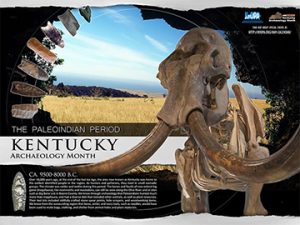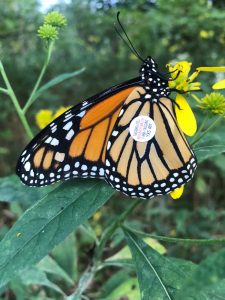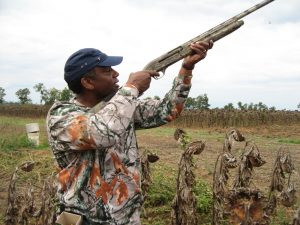 Family-friendly activities that include crafts, music and games will be part of Archaeology Day at Wickliffe Mounds State Historic Site on Sept. 21.
Family-friendly activities that include crafts, music and games will be part of Archaeology Day at Wickliffe Mounds State Historic Site on Sept. 21.
The day – part of Kentucky Archaeology Month — will feature demonstrations and hands-on educational activities about archaeology for the whole family from 10 a.m. to 4 p.m.
Activities include a mock excavation for kids, artifact laboratory station, spear and atlatl throwing, stickball game area, flint knapping, bow and arrows, finger weaving, basket weaving, corn shuck dolls, a drum circle and make and take home a pottery craft.
This event is sponsored in part by the Kentucky Heritage Council. Entrance to the activities is included in the museum admission of $5 for adults and $4 for kids, seniors and military. Parking is free. For more information, call the park office at 270-335-3681 or email carla.hildebrand@ky.gov .
Wickliffe Mounds is an archaeological site of a Native American village of the Mississippian culture. The park features a museum, mounds, walking trail, picnic area, visitor center with tourism information and a gift shop. The park is located along the Mississippi River’s Great River Road National Scenic Byway at 94 Green Street, Highway 51-60-62, Wickliffe, Ky. For more information about this and other Kentucky State Parks, visit www.parks.ky.gov
 September is Kentucky Archaeology Month, a time dedicated to educating the public about what professional archaeologists do, the methods and techniques of archaeology, and what archaeology can tell us about the history of our state and the people who lived here before us.
September is Kentucky Archaeology Month, a time dedicated to educating the public about what professional archaeologists do, the methods and techniques of archaeology, and what archaeology can tell us about the history of our state and the people who lived here before us.
For the fourth year, the Kentucky Heritage Council/State Historic Preservation Office (KHC) is hosting a blog, “30 Days of Kentucky Archaeology,” with brief essays by archaeologists, students, and public historians on topics ranging from earthworks to 3D scanning to native plants. Follow at www.30daysofkentuckyarchaeology.wordpress.com.
“The blog is a great way for archaeologists to highlight their research taking place in Kentucky. These blogs let us see how archaeology connects us to those who have come before us through common material culture, food, experiences, and more,” said KHC archaeologist Karen Stevens, organizer.
The 2019 Kentucky Archaeology Month poster features the Paleoindian Period in Kentucky, the first time a single archaeological era has been the focus. The Kentucky Organization of Professional Archaeologists (KyOPA) will offer free copies of the poster at events throughout the state and has also posted an online calendar at their website, www.kyopa.org.
- Archaeologist Dr. Stephen McBride will discuss the evolution of Camp Nelson – from farmland to Civil War fortification to county park to National Monument – at 6:30 p.m. EDT Monday, Sept 9 at Paul Sawyier Public Library, Frankfort. The presentation is free and sponsored by the library, the Frankfort Civil War Roundtable, and Capital City Museum. No registration required; for information see www.pspl.org/event/camp-nelson/.
- Corn Island Archaeology will host a public archaeology dig at the Conrad-Seaton House, 10320 Watterson Trail, Jeffersontown, during the annual Gaslight Festival Sept. 13-15. Visitors are invited to stop by to chat or help excavate.
- “Bourbon Archaeologist” Nick Laracuente will present “Forgotten Distilleries: An Introduction to Bourbon Archaeology” at 6 p.m. EDT Tuesday, Sept. 17, at Paul Sawyier Public Library and again at 6 p.m. EDT Wednesday, Sept. 18, at Scott County Public Library. Laracuente will step back in time to explore findings from archaeological investigations at two farm distilleries in Woodford County and what these forgotten histories can teach us about life and distilling in 1800s Kentucky.
Both presentations are free but online registration is requested for the Frankfort event. Registration for the Scott County presentation is optional.
- The largest annual public archaeology event in Kentucky, Living Archaeology Weekend, will take place from 10 a.m. to 5 p.m. EDT Saturday, Sept. 21, at Gladie Visitor Center in the Red River Gorge area of Daniel Boone National Forest. This free, family-friendly event features hands-on demonstrations of American Indian and pioneer lifeways and technologies, including hide tanning, spinning, flintknapping, and open-hearth cooking. For information and a list of sponsors, visit www.livingarchaeologyweekend.org.
- Also Sept 21, Wickliffe Mounds State Historic Site and KHC will co-sponsor Archaeology Day from 10 a.m. to 4 p.m. CDT. Hands-on demonstrations and activities will include a mock excavation, spear and atlatl throwing, flint knapping, finger and basket weaving, pottery making, and other crafts. Visitors can participate in a drum circle, play musical instruments from indigenous cultures, and view displays of Native American foods and gourds. Admission is $5 for adults and $4 for children, seniors, and military service members. See http://bit.ly/2Zy63Ti for more.
Archaeology Month activities celebrate the professional practice of archaeology and its value to the Commonwealth as well as the importance of protecting and preserving historic and prehistoric archaeological resources. Thousands of archaeological sites have been documented across the state and some are listed in the National Register of Historic Places.
 Special programs at the Salato Wildlife Education Center in Frankfort will celebrate the beginning of the monarch butterfly’s annual migration south. Participants can learn more about these valuable pollinators and receive expertise and advice on gardening for Kentucky’s native pollinators on Saturday, Sept. 7 at the Salato Center.
Special programs at the Salato Wildlife Education Center in Frankfort will celebrate the beginning of the monarch butterfly’s annual migration south. Participants can learn more about these valuable pollinators and receive expertise and advice on gardening for Kentucky’s native pollinators on Saturday, Sept. 7 at the Salato Center.
The event will feature activities suitable for individuals of all ages, including butterfly crafts, face painting, a monarch tagging demonstration and waystation tours, and a nectar plant and milkweed sale (while quantities last). Butterfly costumes are welcome.
Salato Center staff also will unveil a new Monarch Waystation at the event. This waystation will be dedicated to the late Mary Carol Cooper, who served as director of Salato’s Native Plant Program from 1992 to 2012.
Activities and demonstrations will run from 10:30 a.m. to 3 p.m. (Eastern Time) and are free with paid admission into the center. The center features native wildlife in naturalized enclosures, conservation exhibits and paved walking trails through a variety of habitats.
For a detailed list of activities and times, contact the Salato Center at (502) 892-4460.
The center is located off U.S. 60, approximately 1½ miles west of the U.S. 127 intersection. Look for the bronze deer statue at the entrance of the main Kentucky Fish and Wildlife campus.
Except for select events, hours are 9 a.m. to 5 p.m. Tuesday through Friday, and 10 a.m. to 5 p.m. Saturday. Salato is closed on Sunday, Monday and state holidays.
Except for select events, admission is $5 for adults and $3 for youth 5 to 18. Children four and under are admitted free. The center also offers annual memberships for individuals and families.
The Kentucky Department for Public Health (DPH), within the Cabinet for Health and Family Services (CHFS), is reminding the public that households, businesses and communities can increase their preparedness by following this year’s theme of Prepared, Not Scared. Be Ready for Disasters during September – National Preparedness Month (NPM).
This nationwide effort is organized each year by the U.S. Department of Homeland Security to encourage citizens to prepare and plan for emergencies in their homes, business and schools. This yearly observance was founded after 9/11 to increase preparedness awareness in the U.S., a fitting time to join the effort to help communities prepare for emergencies, such as natural disasters and potential terrorist threats, and to encourage individuals to take action.
“Emergencies and disasters can happen anytime and anywhere, often without notice and can leave us scared and confused,” said Jim House, Preparedness Branch Manager at DPH. “By taking the time to follow the ten steps outlined below, we all can better prepare ourselves and our communities should emergencies or disasters strike. Remember that preparedness is a shared responsibility – it takes a whole community to prepare and respond to emergencies.”
The following ten steps of Prepared, Not Scared. Be Ready for Disasters can encourage households, businesses and organizations to prepare for emergencies during National Preparedness Month by taking the following actions:
- Assemble a Go Bag with supplies in case of an emergency.
- Prepare digital forms of important documents for an emergency.
- Have extra supplies in case of an emergency.
- Download the FEMA app (https://www.fema.gov/mobile-app) to provide emergency information at your fingertips.
- Have an alternative power source for devices during emergencies.
- Set up an In Case of Emergency (ICE) emergency contact in your cell phone.
- Choose an emergency contact when out-of-town.
- Find a local, pet-friendly evacuation center.
- Update your social media to tell loved ones you are safe during an emergency.
- Remember that in an emergency – text and don’t call. Phone lines will be backed up with calls reporting important information. To let your loved ones know you are safe, send them a text message instead.
For more information about preparing for and responding to emergencies, visit http://www.ready.gov.

Canada geese in snow. Photos taken Feb. 9, 2006, at Kentucky Fish and Wildlife headquarters lake.
Applications will be accepted beginning Sept. 1 for two specially constructed waterfowl blinds for mobility-impaired hunters at Doug Travis Wildlife Management Area (WMA) in Hickman and Carlisle counties. Applications for these quota hunts must be postmarked by Sept. 30.
“One blind, Blind 19, is a boat-in site with a handicap-accessible boat ramp. Hunters must hunt within 10 yards of the location marker while using this blind. There will not be a constructed blind to hide the boat this year,” said Wes Little, migratory bird biologist for the Kentucky Department of Fish and Wildlife Resources. “The other blind, Blind 13, is an above ground blind that is wheelchair accessible. The mobility-impaired hunt party will be able to drive to this blind.”
The hunt dates for the mobility-impaired quota hunts during 2019-2020 are:
- Nov. 28–Dec 1, 2019
- Dec. 7-8, 2019
- Dec. 9–12, 2019
- Dec. 13–15, 2019
- Dec. 16–19, 2019
- Dec. 20–22, 2019
- Dec. 23–26, 2019
- Dec. 27–29, 2019
- Dec. 30, 2019 – Jan. 2, 2020
- Jan. 3–5, 2020
- Jan. 6–9, 2020
- Jan. 10–12, 2020
- Jan. 13–16, 2020
- Jan 17–19, 2020
- Jan. 20–23, 2020
- Jan. 24–26, 2020
- Jan. 31, 2020
To register to be drawn for this blind during one or more of the mobility-impaired hunts, mail a 3 x 5 white index card in an envelope addressed to:
Kentucky Department of Fish and Wildlife Resources
Attn: Wes Little – Doug Travis WMA Mobility-Impaired Waterfowl Hunt Application
1 Sportsman’s Lane
Frankfort, KY 40601
The envelope must be postmarked between Sept. 1 and Sept. 30.
“Hunters must specify on the index card the dates for which they are applying and list them in order of preference,” Little said. “While they may apply for up to three hunting dates, they can only be drawn for one hunt. The index card must include the hunter’s name, complete mailing address and phone number as well.”
Successful applicants may invite up to three guests. After Sept. 30, those selected for hunts will be mailed a quota hunt permit for the dates they are drawn, a map showing the blind location and other instructions concerning the hunt. Unsuccessful applicants will not be notified. Duplicate applications for the same hunt will result in disqualification.
“The hunting party will be responsible for bringing and placing decoys as well as retrieving birds,” Little said. “These blinds are open to standby hunters on a first-come, first-served basis if the blind is not occupied by the drawn party by one hour before sunrise, but priority for its use will go to mobility impaired hunters.”
If not completed already, waterfowl hunters must go online at the Kentucky Fish and Wildlife website at fw.ky.gov and click the “My Profile” tab to fill out the Harvest Information Program (HIP) survey before hunting.

Photo: Kentucky Department Fish And Wildlife
Dove season opens on its traditional day of Sept. 1, and dove hunters need to know about some new rules regarding the use of public dove fields before hunting this year.
“New for this year, there is no access to public dove fields from Aug. 15 to Sept.1,” said Wes Little, migratory bird biologist for the Kentucky Department of Fish and Wildlife Resources. “People can scout from the parking lot or road, but you cannot physically walk into the field.”
Little explained hunters repeatedly scouting fields before the season disturbs the doves and makes them more prone to stop using the field.
“The week prior to the season, we see many groups of hunters scouting the fields, and they unintentionally flush birds,” he said. “The more times you flush a dove, the less likely it is to come back to that field. We want to lessen some of that pressure before the season to ensure a quality hunt.”
There are two new public dove fields this year in Ballard and Butler counties. Hunters using the public dove fields at Curtis Gates Lloyd Wildlife Management Area (WMA) in Grant County must know the shooting hours on opening day (Sept. 1) begin at 2 p.m.
Hunters using the cooperator dove field in Madison County off KY 627 must use U.S. Fish and Wildlife Service approved non-toxic shot.
Little noted that a few of the fields slated for public access failed due to the amount of rain this past spring.
A list of current dove fields is available by consulting the 2019-2020 Kentucky Hunting Guide for Dove, Early Waterfowl, Woodcock, Snipe and Crow. The guide, which is available online only, is accessible on Kentucky Fish and Wildlife’s website. Go to fw.ky.gov and search under the keyword, “dove,” for rules, regulations and additional information.
Hunters can also use the interactive dove field map to find public dove fields on the Kentucky Fish and Wildlife website by searching under the keywords, “Public Dove Fields.”
Hunters using public fields should remember that they cannot clean their birds at the site. Hunters also must pick up all spent shotshell hulls or other trash and obey all signs.
The first segment of the 2019-2020 dove season opens Sept. 1 and closes Oct. 26. The second segment opens Nov. 28 and closes Dec. 8, while the third segment of dove season opens Dec. 21, 2019 and closes Jan. 12, 2020.
In addition to a valid Kentucky hunting license, dove hunters must possess a Kentucky Migratory Game Bird/Waterfowl Hunting Permit. Shotguns must be plugged to only hold three shells total, one in the chamber and two in the magazine.
If not completed already, dove hunters must go online at the Kentucky Fish and Wildlife website at fw.ky.gov and click the “My Profile” tab to fill out the Harvest Information Program (HIP) survey before hunting.
Mayor Greg Fischer recently announced that Chewy.com, the leading online pet retailer, is planning to grow in Louisville less than a year after opening a customer service center here.
“We couldn’t be more ecstatic that Chewy.com is bringing additional jobs and investment to our city by expanding for the second time in less than a year,” said Mayor Greg Fischer. “Through the UPS Worldport, Louisville offers companies like Chewy.com the ability to quickly get customers what they need, while enjoying Louisville’s robust business environment. We wish Chewy.com continued success.”
The Kentucky Economic Development Finance Authority Thursday preliminarily approved $1 million in tax incentives for Chewy.com. The company will bring 150 jobs and invest $4.5 million to expand into office space at 11403 Bluegrass Parkway.
This new investment by Chewy is in addition to the $7.2 million already invested and 300 jobs at its more than 88,000-square-foot Pharmacy Customer Service Center, 3621 Fern Valley Road.
Louisville Forward staff continues to work with Chewy.com to connect them with business services, guiding them through the city’s permitting process, and identifying potential community partnerships.
“Chewy’s expansion in Louisville responds to the growing demand we’ve seen from our loyal customers. It allows us to continue delivering the high-touch, reliable service our customers know and love,” said Mita Malhotra, Vice President of Chewy Healthcare. “We continue to enhance our services to support our veterinarian partners and share a commitment to improving pet health and happiness.”
Chewy.com is an e-commerce business that caters to pet owners and pet lovers. It is a one-stop shop, offering more than 1,600 brands of everything from toys and treats to pet medications and supplies. The company was purchased in 2017 by PetSmart in the largest-ever e-commerce transaction. Chewy.com employs roughly 11,000 people in the United States.
 Weather
Weather Traffic
Traffic @LouisvilleDispatch
@LouisvilleDispatch @LouisvilleDisp
@LouisvilleDisp Subscribe
Subscribe